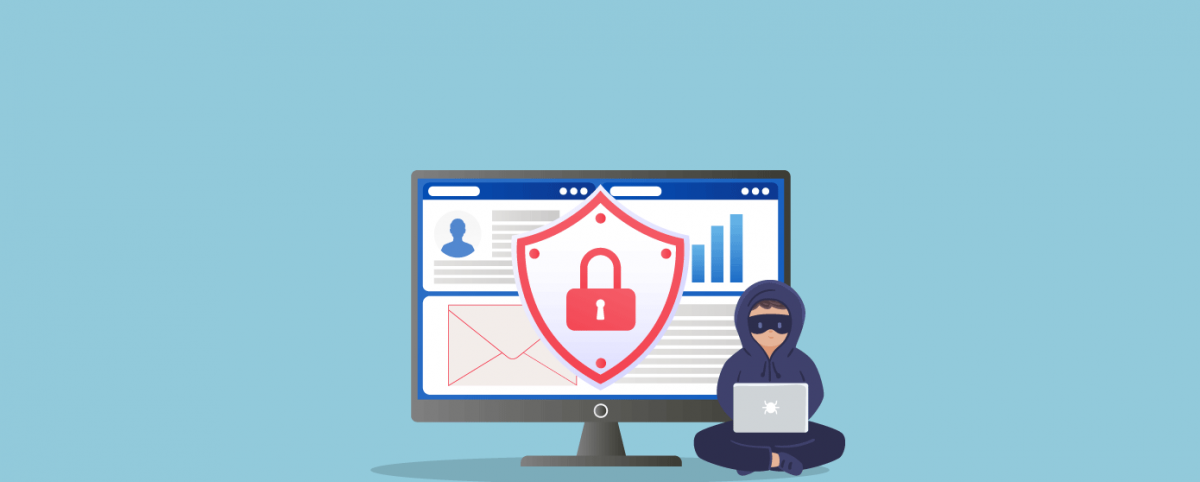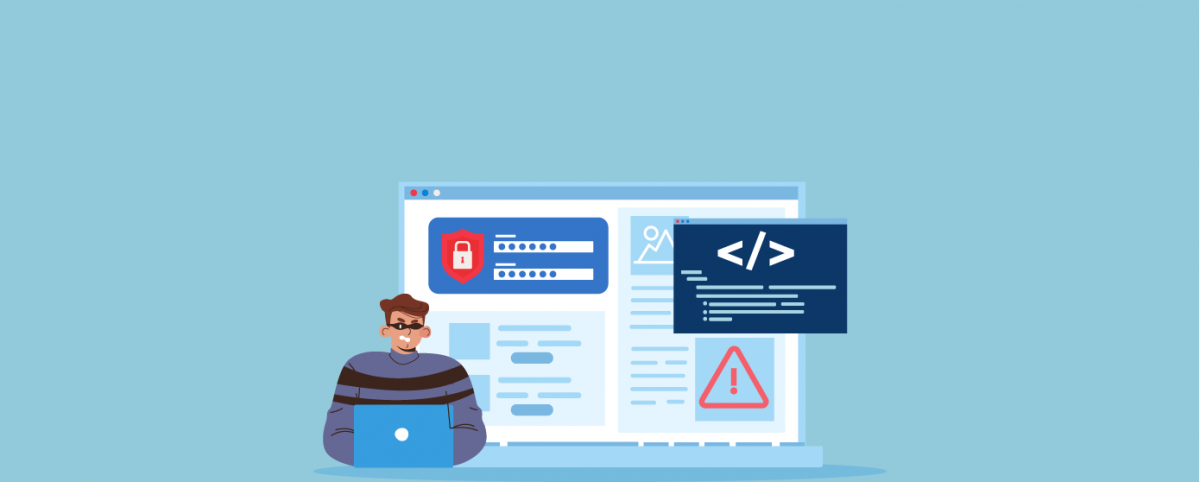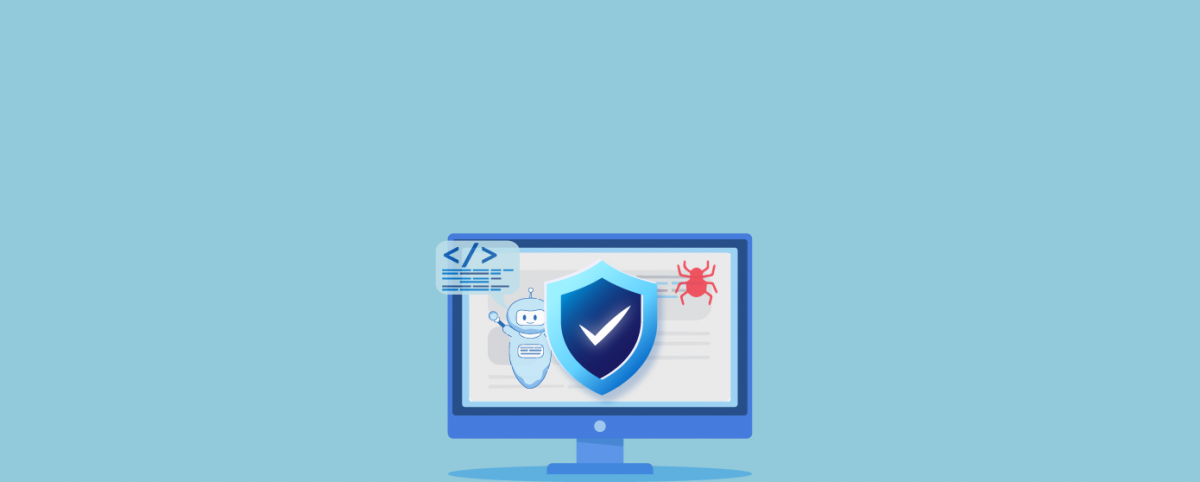5 Website Security Threats and How to Prevent Them
With an average cost of USD 4.45 million for data breaches, the gravity of website security threats cannot be overstated.
These attacks result in financial losses due to customer attrition, downtime, and disruptions and undermine customer trust.
The rising numbers, increasing scale, sophistication, and impact of website security threats underline the necessity for proactive prevention measures.
This article delves into 5 of the most common threats today and ways to prevent them.
The 5 Common Website Security Threats
1. Ransomware
The ransomware attack is among the top security threats to websites and web applications. Ransomware is malware that leverages encryption to take control of systems/ applications/ devices and hold the victim’s information/ files/ data at ransom. The attacker demands a ransom to decrypt the files and enable access to the systems/ apps/ devices.
Ransomware is spread using phishing techniques, domain spoofing, malicious websites, email attachments, malvertisements, etc. Ransomware could also be dropped onto vulnerable systems using exploit kits.
According to a Global Ransomware Report, the frequency of these website security threats is persisting at an unprecedented rate, with a notable 11% increase in global ransomware attacks during Q3 2023 compared to Q2. Furthermore, the year-over-year (YoY) comparison reveals a staggering 95% rise in ransomware attack occurrences.
2. Supply Chain Attacks
In recent years, another common web application security threat has been supply chain attacks, which occur when an attacker infiltrates your application through an external partner such as a SaaS company, vendor, etc.
These attacks target the weakest links in the chain of trust of the organization. The attacker can compromise thousands of customers by breaching the organization’s application/ system.
One of the primary reasons for the upsurge in these website security attacks is the disruptions from the COVID-19 pandemic.
With the need to go remote, adopt cloud computing, and quickly transform their tech stack, organizations sought third-party service providers for solutions that weren’t sufficiently researched and tested.
The most common types of supply chain attacks are:
- Stolen Certificates: Hackers target and steal certificates used by companies to validate the legitimacy and safety of their products. With a stolen certificate, attackers can distribute malicious code under the guise of the compromised company’s trusted identity.
- Compromised Software Development Tools: Threat actors infiltrate the tools and infrastructure used in the software development process. By introducing security weaknesses early in the development life cycle, attackers can compromise the integrity and security of the final applications.
- Code Embedded in Firmware: Malicious code is inserted into the firmware of digital hardware components. Firmware controls the functioning of hardware and interfaces with users and other systems. Attackers can gain unauthorized access to systems or networks by tampering with firmware.
3. Cloud-Based Attacks
Over the past few years, organizations have moved much of their infrastructure to the cloud to ensure business continuity and adapt to hybrid work models. These cloud models are evolving and accelerated, creating security gaps and vulnerabilities attackers can easily leverage.
Cloud-based attacks pose a significant and evolving threat to the security of websites hosted on cloud platforms. One prevalent risk is the potential for data breaches from insecure configurations, mismanaged permissions, and vulnerabilities in cloud interfaces and APIs. Attackers may exploit weaknesses to gain unauthorized access, leading to the exposure of sensitive information.
Some of the common cloud-based web security attacks are:
- S3 Bucket Misconfiguration: A website’s assets and resources are stored in an Amazon S3 bucket if the S3 bucket is misconfigured to allow public access, sensitive data such as user credentials or configuration files may be exposed, leading to unauthorized access and potential data breaches.
- API Security Vulnerability: An inadequately secured API endpoint within a cloud environment may allow attackers to exploit vulnerabilities, inject malicious code, or manipulate requests to gain unauthorized access to sensitive data or perform unauthorized actions. Check out the OWASP API top 10 vulnerabilities.
- Cross-Tenant Attack in a Multi-Tenant Cloud Environment: Exploiting vulnerabilities in shared resources or misconfigurations in a multi-tenant cloud environment, attackers compromise the security of multiple websites hosted on the same infrastructure, leading to data breaches or service disruptions.
4. DDoS Attacks
DDoS attacks are a type of cyberattack where multiple compromised computers are used to flood a target system with traffic, overwhelming its resources and causing service disruptions. The impact of a DDoS attack is not limited to the hosting environment; it affects the target website or online service itself.
Whether a website is hosted on traditional on-premises servers, in a cloud environment, or on a CDN, it can be susceptible to DDoS attacks. The attack aims to exhaust the target’s resources, such as bandwidth, server capacity, or network connections, making the website slow or entirely unavailable for legitimate users.
DDoS attacks come in various types, each aiming to overwhelm a website or online service. Common types of DDoS attacks include volumetric attacks that flood the target with massive traffic, protocol attacks exploiting weaknesses in network protocols, and application layer attacks targeting specific website functionalities.
Additionally, DDoS attacks can be amplified through reflection or amplification techniques, making them even more potent and challenging to mitigate. Follow these DDoS protection best practices to minimize the impact of DDoS attacks.
5. Malicious Code Attacks
Malicious code attacks encompass malware and harmful scripts consisting of lines of computer programming commands to exploit or create technical vulnerabilities. While social engineering addresses the human side of web threats, malicious code represents the technical facet. These threats involve a range of techniques, including:
- Injection Attacks– Injection attacks involve the insertion of harmful scripts into legitimate applications and websites, compromising their integrity. Notable examples include SQL injection and cross-site scripting (XSS), where attackers exploit vulnerabilities to execute malicious commands or steal sensitive information.
- Botnet Exploitation– Botnets involve hijacking user devices, turning them into remote and automated components within a network of similar “zombies.” Cybercriminals leverage botnets to accelerate spam campaigns, launch malware attacks, and conduct other malicious activities.
- Computer Worms– Computer worms are autonomous scripts that run, replicate, and spread without assistance from a related program. They can infect and propagate across networks, causing widespread damage by exploiting system vulnerabilities.
- Spyware Intrusions– Spyware encompasses tracking programs designed to monitor user actions on computer devices. Keyloggers, common spyware, and record keystrokes are used to compromise sensitive information such as passwords and personal data.
Key Measures to Prevent Website Security Threats
Protecting a website from security threats requires a comprehensive approach that addresses various vulnerabilities. Here are key measures to enhance website security:
- Adopt secure development practices and rigorous testing procedures.
- Implement effective vendor management systems.
- Emphasize input validation to enhance security.
- Strengthen authentication processes and enforce robust access controls.
- Provide continuous education to all stakeholders on security measures.
- Regularly update all systems and software components.
- Prioritize data backup strategies to safeguard against potential losses.
- Deploy WAF/ WAAP for enhanced security.
Combining these measures allows you to defend robustly against various security threats and create a safer online environment for users and sensitive data. Regular monitoring and adaptation to emerging threats are essential to an effective website security strategy.
How Does WAF Detect and Prevent Web Security Threats?
A WAF is a security solution designed to safeguard web applications by analyzing and filtering HTTP traffic between a web application and the internet. It acts as a barrier, identifying and neutralizing cyber threats in real time.
Functioning as a protective shield, the WAF thoroughly examines both incoming and outgoing web traffic, effectively identifying and blocking potential threats before they can reach the website or applications.
AppTrana WAAP protects against intrusions leveraging SQL injection, cross-site scripting, local file inclusion, and various attack types. It empowers you to counteract malicious clients exploiting vulnerabilities in your APIs and web applications.
WAAP excels in mitigating SQL injection, cross-site scripting (XSS), and other injection attacks. Scrutinizing input data and blocking malicious code injections prevents unauthorized access to sensitive information.
Effectively detecting and thwarting attempts by botnets to exploit vulnerabilities, WAAP ensures the neutralization of automated attacks, including those aiming to accelerate spam campaigns or launch malware attacks.
In the face of DDoS, WAAP serves as a frontline defense by filtering and absorbing malicious traffic, ensuring your website remains available and responsive to legitimate users.
Moreover, WAAP plays a crucial role in identifying and blocking harmful scripts and malware. By inspecting and filtering the content of web requests and responses, they protect against various forms of malicious code introduced through compromised devices or insecure interfaces.
The WAF rules and policies can be tailored to meet the organization’s needs, specifications, and context to ensure adequate protection. This is important because no two organizations are the same – they have unique challenges, security risks, systems, business logic, vulnerabilities, etc. And so, website security threats do not impact them the same way.
While adopting the best-in-the-breed technology, certified security experts manage the WAF solution. These experts help build policies with surgical accuracy, conduct pen-testing to unearth unknown vulnerabilities, analyze and make sense of security data, provide recommendations to improve security, etc.
Stay tuned for more relevant and interesting security articles. Follow Indusface on Facebook, Twitter, and LinkedIn.

 January 5, 2024
January 5, 2024






